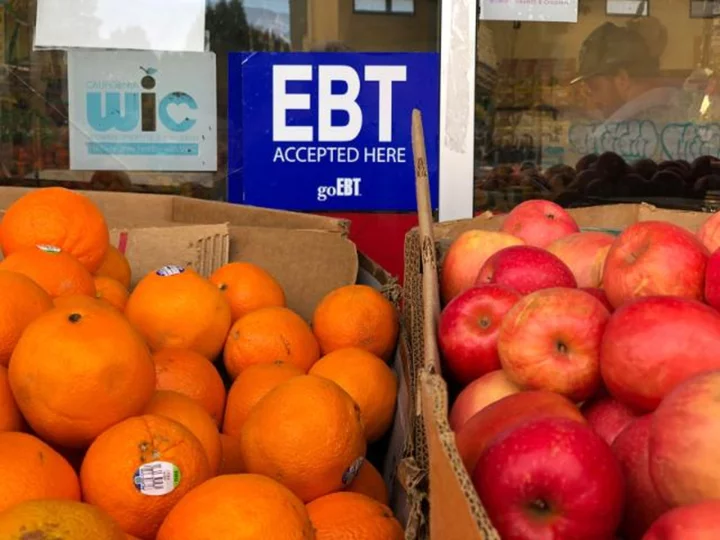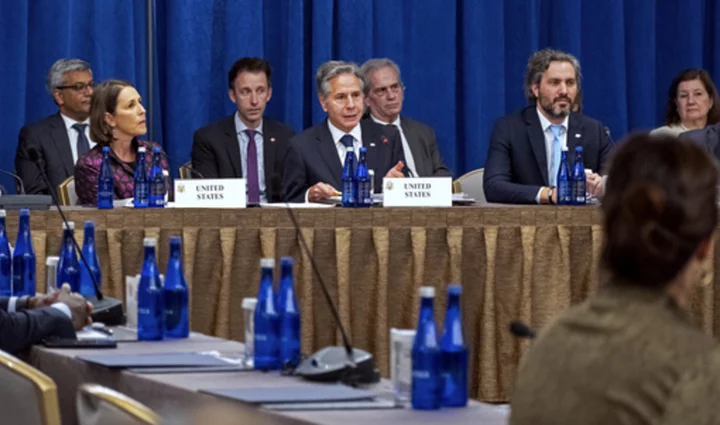WASHINGTON (Reuters) -U.S. retail sales increased more than expected in September as households stepped up purchases of motor vehicles and spent more at restaurants and bars, cementing expectations that economic growth accelerated in the third quarter.
Strong demand illustrated by the report from the Commerce Department on Tuesday, however, raises the risk of the Federal Reserve hiking interest rates in December. The data followed on the heels of stronger-than-expected employment growth and consumer price readings in September.
"The economy looks like it is getting used to the new normal of interest rates being higher for longer because shoppers are not taking a break that's for sure," said Christopher Rupkey, chief economist at FWDBONDS. "Fed officials have another rate hike this year up on their forecast board, and they will need to use it, if the economic data continues to surprise economists on the upside."
Retail sales rose 0.7% last month. Data for August was revised higher to show sales advancing 0.8% instead of 0.6% as previously reported. Economists polled by Reuters had forecast retail sales rising 0.3% in September. Retail sales are mostly goods and are not adjusted for inflation.
They rose 3.8% year-on-year in September. Despite the show of resilience, headwinds are rising for consumers. Higher borrowing costs as the U.S. central bank tackles inflation have pushed credit card delinquencies to an 11-year high.
Consumers are increasingly relying on credit cards to fund purchases. Millions of Americans resumed payments on student loans in October, which economists estimated was equal to roughly $70 billion, or around 0.3% of disposable personal income.
Nevertheless, consumer spending continues to be driven by a tight labor market, with the economy creating 336,000 jobs in September. Excess savings accumulated during the COVID-19 pandemic remain higher than previously estimated.
U.S. stocks opened lower. The dollar rose against a basket of currencies. U.S. Treasury prices fell.
AUTOS LEAD THE WAY
Sales at auto dealerships accelerated 1.0% last month after rising 0.4% in August. Receipts at gasoline stations climbed 0.9%, reflecting higher pump prices. Excluding motor vehicles and gasoline stations, retail sales rose a solid 0.6%.
Online sales jumped 1.1% after advancing 0.4% in August. These sales are likely to rise further in October after Amazon held another Prime Day promotion this month, which saw other retailers offering similar deals.
Sales at food services and drinking places increased 0.9% after rising 0.4% in August. Economists view dining out as a key indicator of household finances. There were also increases in sales at health and personal care, general merchandise as well as food and beverage stores.
But consumers cut back on purchases of other big-ticket items like electronics and appliances, with sales at these outlets falling 0.8%. Receipts at building material, garden equipment and supplies dealers dropped 0.2%. Furniture store sales were unchanged. Sales at clothing stores declined 0.8%.
Receipts at sporting goods, hobby, musical instrument and book stores were unchanged.
Excluding automobiles, gasoline, building materials and food services, retail sales rose 0.6% in September. Data for August was revised up to show these so-called core retail sales gaining 0.2% instead of 0.1% as previously reported.
Core retail sales correspond most closely with the consumer spending component of GDP. Consumer spending is expected to have accelerated in the third quarter, also thanks to a surge in July. Spending on services remains solid, which should also lift overall consumption.
Gross domestic product growth estimates for the third quarter are currently as high as a 5.1% annualized rate.
The economy grew at a 2.1% pace in the April-June quarter, and continues to push ahead despite the Fed hiking its benchmark overnight interest rate by 525 basis points since March 2022 to the current 5.25%-5.50% range.
"This report confirms that there was more momentum in consumer spending throughout the third quarter and more underlying strength that may carry into fourth quarter," said Ellen Zentner, chief economist at Morgan Stanley in New York.
(Reporting by Lucia Mutikani; Editing by Chizu Nomiyama and Andrea Ricci)









